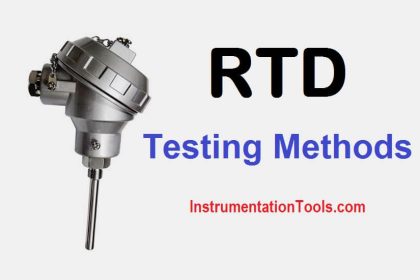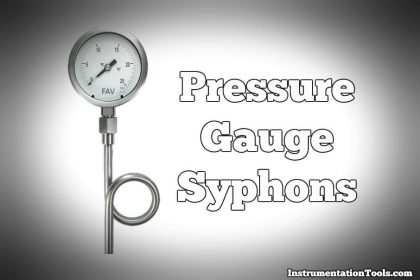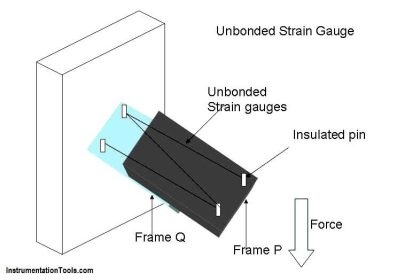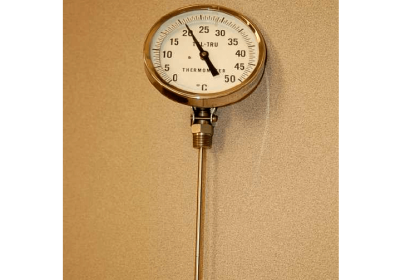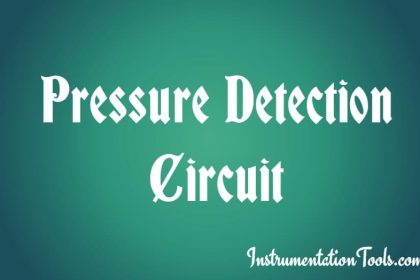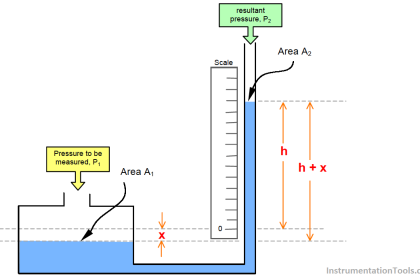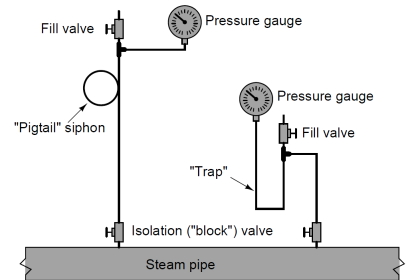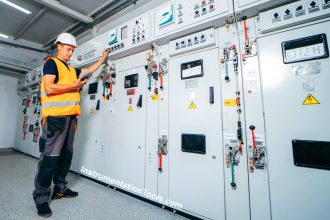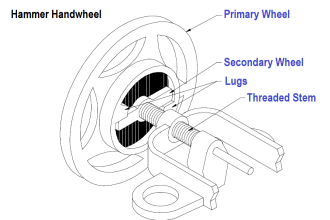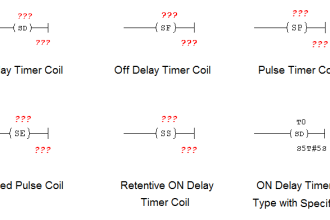PRESSURE GAUGES
- Bourdon tube pressure gauge
- Diaphragm pressure gauge
- Capsule pressure gauge
- Bourdon tube pressure gauge with chemical seal
- Differential pressure gauge
- Absolute pressure gauge with diaphragm
TEMPERATURE GAUGES
- Bimetallic Dial Thermometer
- Gas-filled Dial Thermometer
- Machinery-Thermometer
Bourdon tube pressure gauge
An elastic (circled) measuring element (bourdon tube) will be soldered or welded into a socket; the free end being firmly closed. A change in pressure causes the measuring element into a deflection. This deflection of the free end of the bourdon tube is proportional to the applied pressure and will be transmitted to a rotary geared movement. This movement carries a pointer and indicates the pressure on a dial with 270° angle.
Bourdon tube gauges are used for the measurement of high pressure up to 1000 bar and vacuum to -1 bar of gases, steam and fluids. Accuracy is between ± 0,1% and ± 2,5% of full scale deflection. The bourdon tube can be made of brass, stainless steel or monel in case of aggressive medium.
The ambient temperature shall be -40…+60°C; the medium temperature not higher than +60°C using brass connection and +200°C using “UNI” type gauges made of st.steel.
Diaphragm pressure gauge
A thin, concentrically corrugated diaphragm will be fixed between two flanges. The diaphragm will be loaded with the process pressure on one side and elastically deflects from its normal position. This way is proportional to the applied pressure and will be transmitted to a rotary geared movement. The movement carries a pointer and indicates the pressure on a dial with 270 angle. Diaphragm pressure gauges are used for the measurement of pressure up to 40 bar and vacuum to -1 bar of gases, steam and fluids. Accuracy is ± 1,6% of full scale deflection.
The diaphragm can be protected against aggressive medium using foils made of Tantalum, Hastelloy C etc. or PTFE-coating. The connecting part can be made or protected with suitable material, i.e. SS 316L, PP, PVC, PVDF etc. Diaphragm pressure gauges with open measuring flange are perfectly suited for high viscous, crystallizing and solid matter containing medium. Diaphragm pressure gauges can be easily supplied with an overload safety.
The ambient temperature shall be -20…+60°C; the medium temperature not higher than +100°C.
Capsule pressure gauge
The capsule consists of two thin, concentrically corrugated diaphragms welded or soldered together. Pressure change in the capsule causes an elastic deformation on both sides of the measuring element. The travel of the measuring element is proportional to the measured pressure. It will be transmitted to a pointer using a geared movement and indicated on a dial with 270° angle.
Capsule pressure gauges are used for the measurement of low positive or negative values up to 600 mbar. Accuracy is ± 1,6% of full scale deflection. The capsule is made of brass or SS316 . and used for measuring gases only.
The ambient temperature shall be -20…+60°C; the medium temperature not to be higher than +100°C.
Bourdon tube pressure gauge with chemical seal
The bourdon tube gauge will be fixed to a seal. The seal consists of a defined cavity which will be closed with a thin, elastic diaphragm. The volume between this diaphragm and the bourdon tube will be filled with a transmission fluid after total evacuation. When pressure applies , the elastic diaphragm will be transmitting the applied pressure using this liquid,this way will be taken up from the gauge. The bourdon tube transfers the measuring pressure using a movement on a dial with 270° angle. Due to the liquid filling, the connection between the seal and the gauge must remain closed. The seal can be made in various forms and types.
Gauges with seals can be used for the measurement of pressure from -1 bar up to 1000 bar. Accuracy is ± 1,0% of full scale deflection. Gauges with seal are mainly used outdoor because there is no danger of freezing. A gauge with a connecting flange is suited for high viscous, crystallizing and solid matter containing medium. Flat seals can be used for clearance-volume free pressure measurement. Seals and connecting parts can be made of resistant material against aggressive medium. For particular applications a flexible capillary tube can be installed between the seal and the measuring instrument.
Differential pressure gauge
A pressure chamber will be separated by a thin diaphragm. This diaphragm is under static pressure from both chambers and additionally from one chamber with the measuring pressure. The diaphragm will transmit the pressure difference through a bellow onto the movement. The movement indicates the positive or negative value on a dial with 270° angle. A bellow on the opposite side compensates the power. Differential pressure gauges are used for the measurement of gases and fluids; these can also be aggressive.Accuracy is ± 1,6% of full scale deflection.
The ambient temperature shall be -20…+60°C; the medium temperature not higher than +100°C.
Absolute pressure gauge with diaphragm
This type of gauge is used to measure pressures, independent from any changes in ambient atmospheric pressures. A pressure chamber will be separated by a thin diaphragm. The chamber which will not be loaded with the measuring pressure, will be evacuated to absolute vacuum. This vacuum (= absolute zero-point) is referred as being the reference pressure.
The diaphragm will be loaded with the measuring pressure and elastically deflects from its normal position, thus transmitting the pressure through a bellow onto the movement. Absolute pressure gauges are used for measuring of gases and fluids; these can also be aggressive.Accuracy is ± 1,6% of full scale deflection.
The ambient temperature shall be -20…+60°C; the medium temperature not higher than +100°C.
Bimetallic Dial Thermometer
The measuring element consists of two,welded together, metal tapes. The tapes having different coefficients of thermal expansion. The coiled measuring element is fixed at the end of the stem; the other side being connected to the pointer axle.
The bi-metal stretches or bends itself in case of a change in temperature, causing the coiled element into a turning movement. This movement is proportional to the change in temperature and is indicated on a dial. Bi-metal dial thermometers are used for temperatures from – 50°C up to +500 C.Accuracy is ± 1,6% of full scale deflection.
Gas-filled Dial Thermometers
The measuring principle is based on the volumetric temperature expansion of the gas filling in the measuring element. The measuring element is firmly connected by a capillary tube with a measuring spring. The spring transfers the expansion of the gas filling by a movement on a dial.
Gas-filled dial thermometers are used for temperatures from -80°C up to +600°C. Accuracy is ± 1% of full scale deflection. Gas-filled dial thermometers can be supplied with a capillary line between measuring element and spring of up to 100m length.
Machinery-Thermometers
The measuring principle is based on the volumetric temperature expansion of the filling liquid in the glass tube. The expansion of the filling liquid is indicated on a scale. Machinery-glass-thermometers are used for temperatures from -60°C up to +600°C.Accuracy is ± 1,6% of full scale deflection.
Source : schmierer.de
